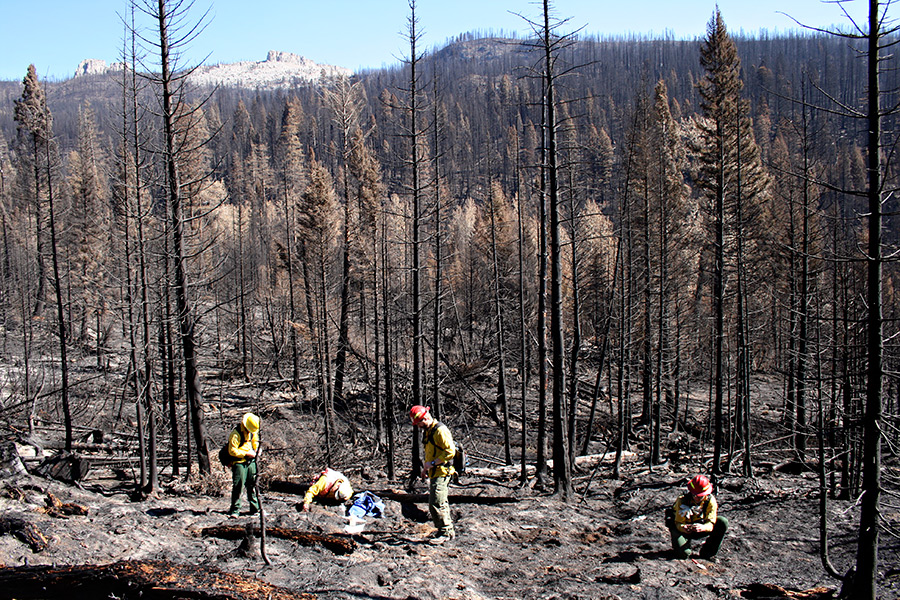Another week of cool temperatures and rain could put a cap on this year’s extreme fire season and, as the flames finally die out, officials on the Flathead National Forest are looking to rehabilitate burned areas.
This month, firefighters across the region are beginning to restore land that was disrupted by fire lines and this week U.S. Forest Service employees will head into the woods to conduct Burned Area Emergency Response (BAER) assessments. The assessments will help officials determine what areas damaged in the fires could pose a problem in the future, particularly for surrounding roads and infrastructure.
The rehabilitation work and assessments come after thousands of acres were burned in Northwest Montana this summer. The Bear Creek Fire east of Swan Lake alone burned more than 70,000 acres, damaging roads and trails across the forest.
“We have a huge workload ahead of us,” said forest hydrologist Craig Kendall. Kendall said early estimates indicate more than 100 miles of trail in the Bob Marshall Wilderness were damaged this year by fire. After a trail is burned, Forest Service employees go in to remove snags and build water bars to prevent erosion. A water bar, or interceptor dyke, diverts surface water off trails and roads. Kendall said much of the trail restoration work will happen late this fall or early next spring.
In other areas, fire officials will use satellite images and on-the-ground reports to determine what impacts burned areas will have on infrastructure downslope. Kendall said if an area is cleared of vegetation it is more likely that land will erode. After fires, workers clear culverts downslope or in extreme cases install larger ones to handle increased run-off. In the case of the Sheep Fire near Essex, Kendall said USFS and BNSF Railway officials are already looking at how burned areas could impact the railroad below.
Firefighters are also removing fire lines that were cut across the landscape in order to prevent the fires from spreading. In most cases, restoring a fire line simply means pulling back the material and slash that was removed to create it. Kendall said in some instances, additional slash would be added to steep areas that were burned to help slow erosion.
The process is much the same in Glacier National Park, where two major fires scorched more than 23,000 acres this summer. Dawn LaFleur, restoration biologist for the Park Service, said in many cases the restoration work begins before the fires are even out.
“We start with a minimum impact strategy to begin with and we even limit the amount of hand line we build in the first place,” she said.
On the Reynolds Creek Fire near St. Mary, fire line restoration efforts will be completed in the next few weeks. One challenging part of the restoration was a stretch of fire line that was created with explosives. Unlike a regular fire line, where the disturbed soil is next to it, the explosion dispersed the dirt and underbrush even further. Park Service officials have also been looking at how the burned area may impact the Going-to-the-Sun Road. LaFleur said in some instances, downed trees would be left in place because they act as natural water bars.
The National Weather Service in Missoula is forecasting another week of rain and cool temperatures for the region and Flathead County Fire Service Area Manager Lincoln Chute said it would help the situation.
“If we get another three or four days of rain it might put an end to the (fire) season,” he said. “It’s winding down.”
Chute said because the days are getting shorter, the window of opportunity for a wildfire to start or grow is also getting shorter. However, he said it is still possible for dead grass to dry out quickly, raising concerns for brush fires.
“The possibility for fire is still there until there is snow on the grass,” he said. “It’s too late in the year for that dead grass to green up again.”
